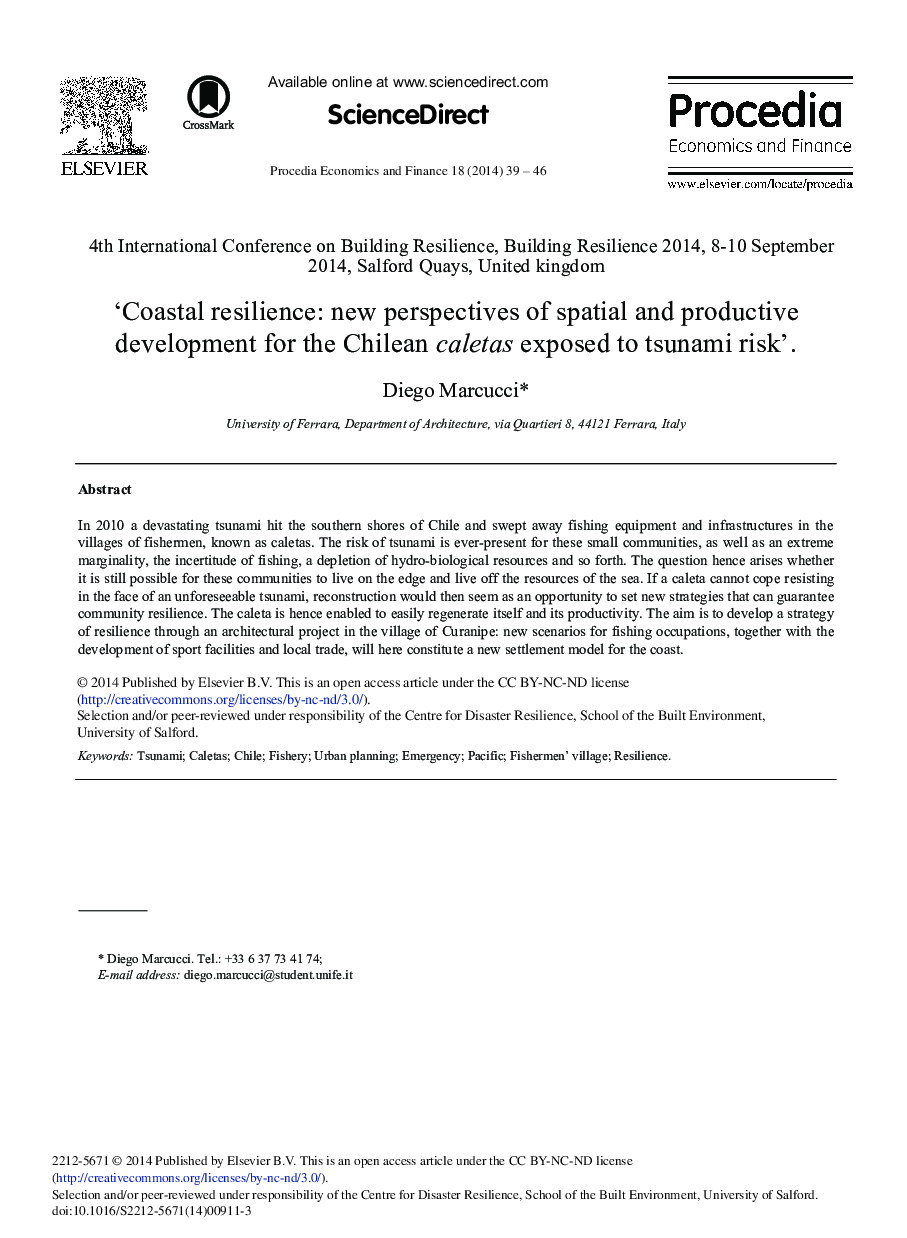| Article ID | Journal | Published Year | Pages | File Type |
|---|---|---|---|---|
| 981475 | Procedia Economics and Finance | 2014 | 8 Pages |
In 2010 a devastating tsunami hit the southern shores of Chile and swept away fishing equipment and infrastructures in the villages of fishermen, known as caletas. The risk of tsunami is ever-present for these small communities, as well as an extreme marginality, the incertitude of fishing, a depletion of hydro-biological resources and so forth. The question hence arises whether it is still possible for these communities to live on the edge and live off the resources of the sea. If a caleta cannot cope resisting in the face of an unforeseeable tsunami, reconstruction would then seem as an opportunity to set new strategies that can guarantee community resilience. The caleta is hence enabled to easily regenerate itself and its productivity. The aim is to develop a strategy of resilience through an architectural project in the village of Curanipe: new scenarios for fishing occupations, together with the development of sport facilities and local trade, will here constitute a new settlement model for the coast.
